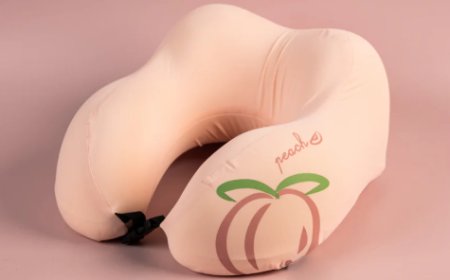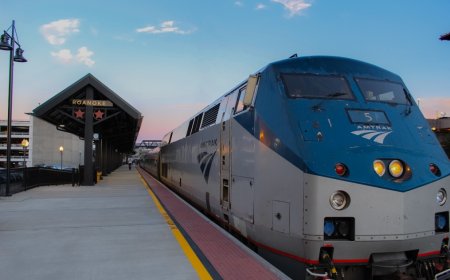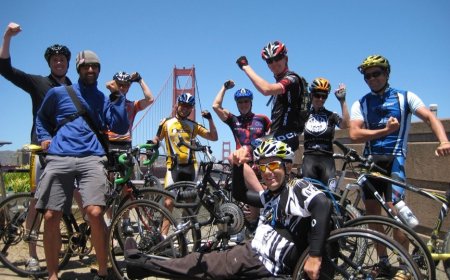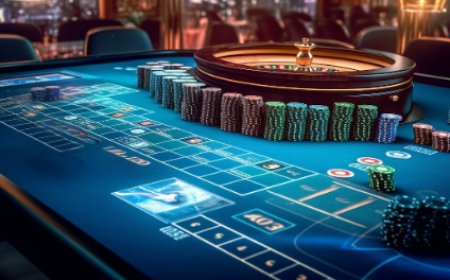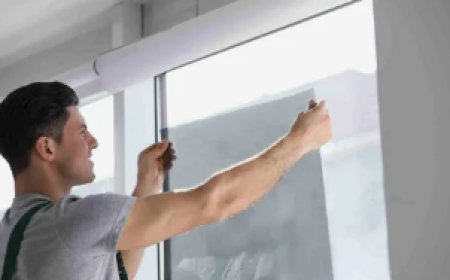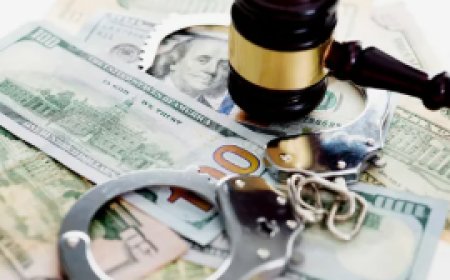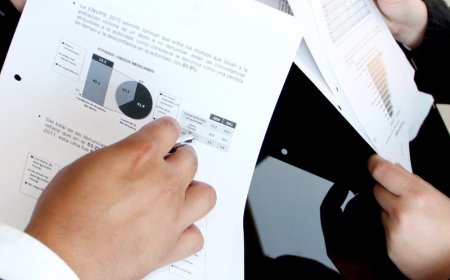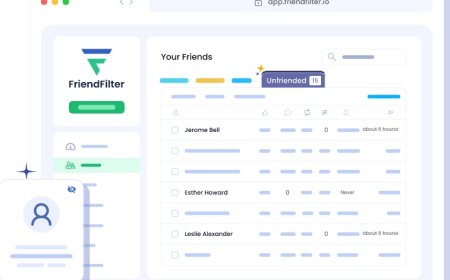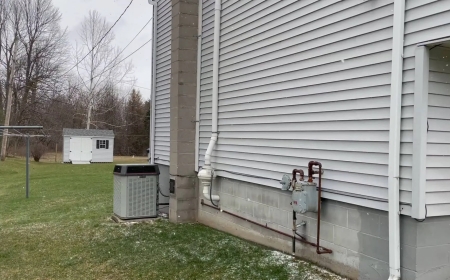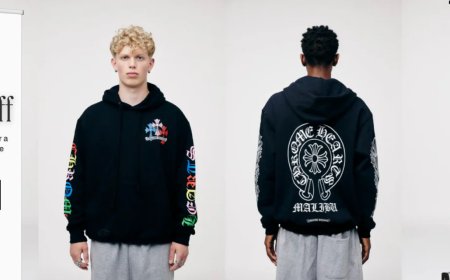How To Gallery Walk First Saturday Dallas
How to Gallery Walk First Saturday Dallas First Saturday Dallas is more than just an art event—it’s a cultural movement that transforms the city’s urban core into a living gallery every first Saturday of the month. Known as the Gallery Walk, this free, community-driven experience invites locals and visitors alike to explore over 50 galleries, studios, and creative spaces in the Dallas Arts Distric
How to Gallery Walk First Saturday Dallas
First Saturday Dallas is more than just an art event—it’s a cultural movement that transforms the city’s urban core into a living gallery every first Saturday of the month. Known as the Gallery Walk, this free, community-driven experience invites locals and visitors alike to explore over 50 galleries, studios, and creative spaces in the Dallas Arts District and surrounding neighborhoods. From contemporary paintings and sculptural installations to live music, performance art, and artisanal food pop-ups, the Gallery Walk offers an immersive dive into Dallas’s thriving visual arts scene. For first-timers and seasoned art lovers alike, knowing how to navigate, plan, and fully experience this event can elevate it from a casual outing to a meaningful cultural pilgrimage. This comprehensive guide walks you through every essential step—from pre-event preparation to post-event reflection—ensuring you make the most of your First Saturday Dallas Gallery Walk experience.
Step-by-Step Guide
Successfully navigating the First Saturday Dallas Gallery Walk requires more than just showing up. It demands thoughtful planning, strategic timing, and an open mindset. Follow this step-by-step guide to transform your visit into a seamless, enriching journey.
Step 1: Research the Event Date and Hours
The Gallery Walk occurs on the first Saturday of every month, rain or shine, typically from 6:00 PM to 9:00 PM. However, some venues open earlier or stay open later, so always verify the official schedule on the Dallas Arts District website or the First Saturday Dallas event page. Mark your calendar at least two weeks in advance to avoid missing any special exhibitions or guest artists. Note that holidays or major city events may shift the date slightly—always double-check before making plans.
Step 2: Map Your Route
The Dallas Arts District spans approximately 19 city blocks, centered around Flora Street between North Lamar and North Stemmons. Key venues include the Dallas Museum of Art, the Nasher Sculpture Center, the Crow Collection of Asian Art, and the Margot and Bill Winspear Opera House. However, many independent galleries extend into adjacent neighborhoods like Deep Ellum, Uptown, and West End.
Use Google Maps or the official First Saturday Dallas interactive map (available on their website) to plot a walking route. Prioritize clusters of galleries—such as the concentration around Harwood Street or the Arts District core—to minimize backtracking. Consider printing a physical map or downloading an offline version, as cell service can be inconsistent in dense urban areas.
Step 3: Choose Your Focus
With dozens of venues open simultaneously, it’s impossible to see everything. Decide on your personal focus before you begin:
- Contemporary Art Enthusiast? Prioritize galleries like Inman Gallery, Margo Leavin Gallery, or the Art League Dallas.
- Photography Lover? Visit the Center for Visual Arts or the Dallas Photo Collective.
- Emerging Artists? Look for pop-up studios in the West End or the former warehouses along Commerce Street.
- Family-Friendly? Head to the Dallas Museum of Art’s Family Art Studio or the Nasher’s interactive installations.
Once you’ve selected your focus, identify 6–8 venues you’re most excited about. This prevents overwhelm and ensures deeper engagement with each space.
Step 4: Prepare Your Essentials
Comfort and preparedness are key. Pack a small crossbody bag or clutch with:
- A portable phone charger
- Water and a light snack (some venues offer refreshments, but not all)
- A small notebook and pen for jotting down artist names or titles
- Comfortable walking shoes—expect to cover 2–4 miles
- A light jacket or shawl (evenings in Dallas can be cool, even in summer)
- Small bills or a contactless payment method (some artists accept cash for small works)
Do not carry large bags or backpacks—they’re often restricted in galleries for security and space reasons.
Step 5: Arrive Early and Start Strong
Arriving between 5:30 PM and 6:00 PM gives you a significant advantage. The crowds are lighter, parking is easier to find, and you can engage more meaningfully with gallery staff and artists before the rush. Begin your evening at the Dallas Museum of Art or the Nasher Sculpture Center—they often host opening receptions with curated talks or live performances that set the tone for the night.
As you enter each gallery, take a moment to read the wall text. Many venues provide artist bios, exhibition statements, and historical context that enrich your viewing experience. Don’t hesitate to ask questions—gallery staff are passionate and eager to share insights.
Step 6: Engage with Artists and Creators
One of the most rewarding aspects of First Saturday Dallas is the direct access to artists. Many creators are present in person, often standing beside their work. This is your opportunity to learn about their process, inspiration, and technique. Ask thoughtful questions like:
- “What inspired this piece?”
- “How long did it take to complete?”
- “Are you working on any new projects?”
Avoid superficial comments like “I could do that.” Instead, express curiosity. Artists appreciate genuine interest more than praise. If you’re moved by a piece, consider purchasing it—many works are priced affordably, and direct support empowers local talent.
Step 7: Experience the Peripheral Events
The Gallery Walk isn’t limited to indoor exhibitions. Look for:
- Live jazz or acoustic sets in outdoor courtyards
- Dance performances in public plazas
- Pop-up food trucks offering local cuisine
- Art-making stations for children and adults
These elements transform the event into a multi-sensory festival. The Deep Ellum neighborhood, just a short walk from the Arts District, often hosts street musicians and mural tours. Take a detour if time allows—it’s where Dallas’s creative undercurrent flows most freely.
Step 8: Document Your Experience
While photography is generally permitted (unless marked otherwise), be respectful. Avoid flash, don’t block pathways, and never photograph artworks without permission if they’re marked “No Photos.” Use your phone to capture details: a texture, a color palette, a signature, or a quote from the artist’s statement.
Consider creating a digital journal afterward. Use apps like Notion, Google Keep, or even Instagram Stories to compile your favorites. Tag the galleries and artists—you’ll help them gain visibility, and you’ll have a personal archive of your cultural journey.
Step 9: Reflect and Plan for Next Month
After the event, take 10–15 minutes to reflect. What surprised you? Which piece lingered in your mind? Did you discover a new artist or medium you’d like to explore further?
Use this reflection to inform your next visit. Did you focus too narrowly? Did you miss a neighborhood you’d like to revisit? Make notes for next month’s walk. Over time, your Gallery Walk will evolve from a single outing into a monthly ritual of discovery.
Best Practices
Maximizing your First Saturday Dallas Gallery Walk isn’t just about what you see—it’s about how you experience it. These best practices ensure your visit is respectful, enriching, and memorable.
Respect the Space
Galleries are not retail stores. Maintain a quiet demeanor, avoid touching artworks (even if they look tempting), and give others space to view pieces. Many installations are fragile, and even a slight bump can cause irreparable damage. If you’re unsure about photography or movement, ask a staff member.
Support Local Artists
Artists often rely on sales from events like this to fund their next project. Even if you can’t afford a large piece, consider purchasing a print, postcard, or small sculpture. Many artists offer affordable works under $100. Your purchase isn’t just a transaction—it’s an investment in Dallas’s creative ecosystem.
Wear Appropriate Footwear
The Dallas Arts District is vast. You’ll be walking on concrete, uneven sidewalks, and occasionally gravel or cobblestone. High heels, sandals, or new shoes are not recommended. Opt for supportive, broken-in walking shoes. Comfort is non-negotiable.
Stay Hydrated and Energized
Even if you don’t feel thirsty, walking for hours in varying temperatures can lead to dehydration. Carry water. Avoid heavy meals right before the walk—opt for a light snack instead. Many venues offer complimentary wine or non-alcoholic drinks, but don’t rely on them. Bring your own if you’re sensitive to crowds or have dietary restrictions.
Arrive with an Open Mind
Not every piece will resonate with you—and that’s okay. Contemporary art often challenges norms, provokes discomfort, or invites ambiguity. Instead of asking, “Do I like this?” try asking, “What is this trying to say?” or “How does this make me feel?” The goal isn’t to like everything, but to engage with everything.
Follow Social Media for Real-Time Updates
Follow @firstsaturdaydallas on Instagram and join the Facebook group “First Saturday Dallas Gallery Walk.” These platforms share last-minute changes, pop-up installations, artist takeovers, and hidden gems you won’t find on the official map. Real-time updates can lead you to surprise performances or limited-edition releases.
Be Mindful of Crowds
On busy months, galleries can become crowded. If a space feels overwhelming, step outside. Take a breath, revisit later, or explore a quieter venue. There’s no rush. The beauty of First Saturday Dallas is that it’s a monthly event—you’ll have another chance.
Engage with the Community
Strike up conversations with fellow attendees. You might meet a local historian, a fellow art student, or someone who knows the artist personally. These interactions often lead to unexpected insights or invitations to future exhibitions. The Gallery Walk is as much about community as it is about art.
Leave No Trace
Dispose of any trash properly. Many venues are in historic buildings with strict environmental policies. If you receive a brochure or map, keep it until you find a recycling bin. Small acts of environmental responsibility amplify the event’s cultural integrity.
Tools and Resources
Equipping yourself with the right tools and resources can turn a good Gallery Walk into an exceptional one. Below are essential digital and physical resources to enhance your experience.
Official Websites
- Dallas Arts District – The central hub for maps, event calendars, parking info, and venue directories.
- First Saturday Dallas – Official event site with artist spotlights, downloadable maps, and monthly themes.
- Dallas Museum of Art – Offers free admission on First Saturday and often hosts special exhibitions or guided tours.
- Nasher Sculpture Center – Renowned for its outdoor installations and educational programming.
Interactive Maps
The interactive map on the First Saturday Dallas website is the most reliable tool. It updates in real time with venue status, special events, and artist appearances. You can filter by:
- Art Medium (painting, sculpture, digital, etc.)
- Accessibility Features (wheelchair access, ASL interpreters)
- Family-Friendly Zones
- Food & Beverage Locations
Download the map as a PDF or use the mobile-optimized version on your phone. Enable location services for real-time navigation.
Mobile Apps
- Google Maps – Use the “Walking” mode to plot your route. Save your favorite galleries as “Favorites” for quick access.
- Notion – Create a personal Gallery Walk journal with columns for artist names, titles, prices, and your thoughts.
- Instagram – Search hashtags like
FirstSaturdayDallas, #DallasArtWalk, or #DALLASGALLERYWALK to discover user-generated content and hidden spots.
- Spotify – Create a playlist titled “First Saturday Dallas Vibes” with ambient, jazz, or experimental tracks to set the mood before you go.
Printed Materials
While digital tools are convenient, printed materials remain valuable:
- Download and print the official event map from the First Saturday Dallas website.
- Pick up a physical program at any participating gallery or the Dallas Museum of Art lobby—these often include artist bios and exhibition descriptions not available online.
- Bring a small notebook. Writing by hand improves memory retention and encourages deeper observation.
Transportation Options
Parking in the Arts District is limited. Consider these alternatives:
- DART Rail – Take the Red or Blue Line to the Arts District Station. It’s a 5-minute walk to the core galleries.
- Bike Share – Use the Dallas B-cycle system. Stations are located near the Nasher and DMA.
- Rideshare – Uber and Lyft drop-off points are marked near the Winspear Opera House.
- Walking – If you’re staying in Uptown, Deep Ellum, or downtown, walking is often the most efficient option.
Learning Resources
Deepen your understanding with these free resources:
- “How to Look at Modern Art” by Michael Paraskos – A short, accessible guide to interpreting contemporary works.
- Art21 Documentary Series – Free episodes on PBS and YouTube featuring Texas-based artists.
- Dallas Museum of Art’s “Art Around You” Podcast – Episodes on local artists and exhibition histories.
Real Examples
Real experiences illustrate the transformative power of the First Saturday Dallas Gallery Walk. Below are three detailed examples from past events, showcasing diverse approaches to the experience.
Example 1: The First-Time Visitor
Jamila, a recent transplant from Atlanta, attended her first Gallery Walk in March. She arrived at 6:15 PM, unsure of what to expect. Starting at the Dallas Museum of Art, she joined a free 30-minute guided tour titled “Art of the Southwest.” She was captivated by a mixed-media piece by local artist Lila Reyes, titled “Echoes of the Rio Grande.” The artist was present, explaining how she used reclaimed textiles from her grandmother’s quilts to represent cultural memory. Jamila bought a small print for $45 and made a note to follow Reyes on Instagram. She then walked to the Crow Collection, where she participated in a free calligraphy workshop. By 8:30 PM, she had visited five venues, eaten a taco from a food truck, and listened to a saxophonist play in the plaza. “I didn’t know Dallas had this,” she told a stranger. “I feel like I found a new home.”
Example 2: The Art Collector
Robert, a retired engineer and avid collector, attends every First Saturday Dallas. He doesn’t buy everything—he looks for patterns. In June, he noticed a recurring theme: artists using discarded electronics in sculptures. He visited five galleries featuring this trend, spoke with three artists, and took photos of each piece. Later, he compiled them into a digital zine titled “Circuitry and Memory,” which he shared with a local university art department. His research led to an invitation to speak at a panel on “Sustainability in Contemporary Art.” Robert’s approach shows how the Gallery Walk can evolve into a platform for intellectual contribution.
Example 3: The Student Group
A group of five art students from Southern Methodist University planned a Gallery Walk as a class assignment. They divided roles: one mapped the route, one documented photos, one interviewed artists, one took notes on materials used, and one tracked time. They visited 12 venues, including a pop-up gallery in a repurposed laundromat. One artist, a non-binary student from El Salvador, spoke about using laundry detergent bottles as canvases to comment on labor and identity. The group later curated a mini-exhibition on campus using their photos and notes. Their professor called it “one of the most authentic learning experiences in five years.”
Example 4: The Tourist
David and Elena, visiting from Germany, heard about First Saturday Dallas through a travel blog. They reserved a hotel near the Arts District and treated the evening as their primary cultural activity. They used a translation app to ask questions in Spanish and German. They were surprised by the warmth of the artists and the lack of pretension. “In Berlin, art feels formal,” Elena said. “Here, it feels alive.” They bought a ceramic bowl from a local potter and mailed it home as a gift. Their Airbnb host later invited them to a private studio tour the following week.
FAQs
Is the Gallery Walk really free?
Yes. Admission to all participating galleries, studios, and public installations is completely free. Some venues may offer paid workshops or special ticketed events, but these are clearly marked. The core experience—viewing art, meeting artists, and enjoying performances—is always free.
Do I need to register or get a ticket?
No registration is required. Simply show up. However, some galleries may have limited capacity for live performances or artist talks—arriving early ensures access.
Can I bring my dog?
Most galleries do not allow pets, except for certified service animals. If you plan to bring a service animal, check with individual venues ahead of time. Outdoor spaces and food trucks are generally pet-friendly.
Are there restrooms available?
Yes. Restrooms are available at the Dallas Museum of Art, Nasher Sculpture Center, and several other major venues. Some galleries have limited facilities—plan accordingly. Portable restrooms are also stationed along the main walkways.
What if it rains?
The Gallery Walk proceeds rain or shine. Many galleries are indoors, and outdoor performances often have covered areas. Bring a compact umbrella or light raincoat. Check the event website for updates on weather-related changes.
Can I buy art at the event?
Absolutely. Many artists sell their work directly, and prices range from $20 to $5,000. Some galleries offer payment plans or layaway options. Always ask about framing, shipping, or return policies before purchasing.
Are children welcome?
Yes. Many venues offer family-friendly activities, including art-making stations, scavenger hunts, and interactive installations. The Dallas Museum of Art’s Family Art Studio is especially popular with kids. Strollers are allowed, but be mindful of narrow spaces in some galleries.
How do I find out who’s exhibiting each month?
Visit firstsaturdaydallas.com two weeks before the event. The website publishes a full list of participating venues, artist names, and exhibition titles. Social media channels also post weekly previews.
Is parking easy?
Parking is limited and often expensive. Public transit, rideshare, or biking are recommended. If you must drive, use the Dallas Arts District parking app to locate available spots. Metered street parking is available but fills quickly.
Can I volunteer or participate as an artist?
Yes. Artists can apply to participate through the First Saturday Dallas website. Volunteers are also welcome—roles include map distribution, crowd assistance, and social media support. Applications open monthly.
Conclusion
The First Saturday Dallas Gallery Walk is more than an event—it’s a living, breathing expression of the city’s creative soul. It transforms quiet streets into vibrant corridors of imagination, where strangers become fellow travelers in the pursuit of beauty, meaning, and connection. By following the steps outlined in this guide, you don’t just attend the Gallery Walk—you become part of its story. You become a witness to the quiet triumphs of emerging artists, a supporter of local culture, and a participant in a monthly ritual that redefines what a city can be.
There’s no right or wrong way to experience it. Some come to buy. Others come to learn. Some come to be seen. But the most powerful visitors come simply to be present. To pause. To look. To feel. To listen.
So when the next first Saturday arrives, lace up your shoes, grab your map, and step into the light. The galleries are open. The artists are waiting. And Dallas, in all its raw, radiant glory, is ready to show you what art looks like when it’s alive.





